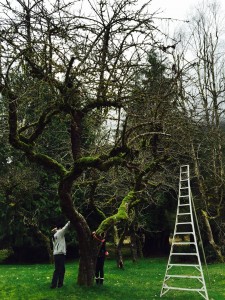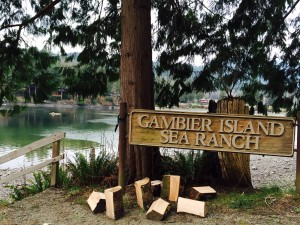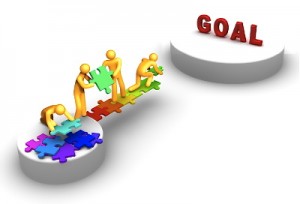Click on the link to view: LFS 350 – Proposal Report: Gambier Island (Group 24)
As we approach the middle of the semester, our group has achieved many goals and objectives that we had set up each week. At this point in the semester we took the opportunity to look back and reflect on a significant moment in learning. We did this by looking at what we had experienced, what we discovered and by the actions we took. Lastly, we created a timeline for the rest of the semester in order to keep up with our goals in a timely and respectful manner.
to look back and reflect on a significant moment in learning. We did this by looking at what we had experienced, what we discovered and by the actions we took. Lastly, we created a timeline for the rest of the semester in order to keep up with our goals in a timely and respectful manner.
Weekly objectives and Achievements
Our weekly objectives are to meet at least once a week to discuss how we are going to complete our weekly assignments and fairly distribute and divide our tasks. We have achieved our work by updating each other about the progress on our project and assignments, as well as helping each other out when needed. We have been communicating and discussing the progress of the project and assignments efficiently through emails, Facebook, Skype and Google Documents.
Thus far we have used our time efficiently and achieved many goals. During session one, our group was able to meet each other for the first time and share each of our interests with the rest of the group. After our group discussion we found some common interests that contributed to choosing our community based experiential learning project topic. We also learned that although each one of us came from different faculties or cultures, the diversity was actually beneficial for the project as it allowed us to all contribute useful ideas from our different perspectives.
In session two, our topic was chosen, Gambier Island: Row, Row, Row Your Apples, Part 2. During this session we had the opportunity to go over various components of this project such as the project summary, organization of information, project description and expected outcomes.
During flexible learning in session three, one of our group members managed to set up a Skype meeting with the members of the Gambier Island Farm Committee to discuss the questions that we had previously organized and issues or concerns that the community had. During the Skype meeting, we were able to find out some useful information that enhanced our project plan. Additionally, our group also was able to create our blog and complete the first blog post within that week.
In session four, our group divided up our tasks according to the instructions shown on the UBC LFS 350 website and completed the first draft of our proposal. During the week, we constantly communicated with each other and checked the progress of our work using Google Documents and Facebook.
In session five, we were able to meet our TA, discuss our proposal report and get helpful feedback. After the meeting, we edited each group member’s part based on the instructions of the proposal report and feedback from our TA. Finally, we were able to submit it as a finalized report on the due date.
Reflection on a moment of significance
We used Rolfe et al.’s (2001) model in this section.
 What
What
In the beginning of our preparation for our proposal report our group was initially confused about what we were expected to do, especially for the Gambier Island community. None of the group members have been to Gambier Island, so it was hard to estimate or predict what kind of environment they had and what kind of goals the community possessed. Those were the factors that might not appear on the internet or in books and had to be researched through communication. Although our project objectives explained what we needed to accomplish, we were not certain on what the community specifically wanted to get out of our partnership. According to the paper written by Mathie and Cunningham (2003), it emphasized that the core of Asset-based Community Development (ABCD) approach focuses on social relationships. By bonding and bridging social capital, it is helpful to generate opportunities for the community’s development (Mathie & Cunningham, 2003). This article also suggested some methods such as collecting stories of community successes, analyzing reasons and problems and building relationships among local assets in order to focus more on community (Mathie & Cunningham, 2003). As a result of trying to follow the ABCD approach, we worked towards developing clear objectives and aims to accomplish during this project by using effective communication and trying to develop the resources and positives found on Gambier Island.
So What
Our group decided to contact one of the members of the Gambier Island Farm Committee to discuss what their goals and concerns were so that we could get a better idea of what we should accomplish and how we could cooperate with the community in a respectful manner. During the Skype meeting, we were able to recognize some issues that we could have missed. For example, two of the committee members, Rosalie and David, told us that they were having a problem with deer because they disrupte their orchards by eating fruits. Additionally, they asked us to give them an overview of what we were planning to do and a timeline for our project so that they would know what to expect and how to prepare for this project (Boulter and Darvill, Personal Communication). In week three’s TED Talk, Ernesto talked about the importance of listening and understanding a culture or a community even before designing research or community projects. It would be challenging for both the community and groups that were planning for projects if needs and supports did not match (Ernesto, 2012). Through the experience, our group learned that it was significant to listen and understand what they actually needed so that we were able to find out more valuable components that were linked to support them and plan out our project.
Now What
Through this experience, our group was able to learn how important communication was. Without this approach of communication we would have neglected issues that the community was truly concerned with. In order to achieve a successful outcome, we learned that it is significantly important to communicate with the community directly and discuss certain issues that our group or the community has instead of simply assuming or following expected outcomes that may limit our abilities. In that way, along with utilizing as ABCD approach, we can expand our ideas and achieve more goals in a positive manner.
Furthermore, initially our group was worried about many aspects that were associated with this project, such as grafting techniques, uncertainty of the island and unclear objectives of the project. However, according to week 4’s Ted Talk, it was said that messy problems can inspire creativity and adding randomness to make even messier can solve the problem better (Harford, 2016). It was also recommended to gain appreciation for unexpected advantages of having to cope with the mess (Harford, 2016). Also according to the Podcast, we should not be afraid of facing challenges and failures and rather experience failure quickly (Cohn, 2014). The reason for this is that through the failures, we can create more possible ways to solve the problem efficiently and create more possible outcomes. Therefore, although we have been expecting some failures and challenges throughout the term, we will learn from them and think of those experiences as small steps that may lead to a successful outcome.
 Identify upcoming objectives and strategies to achieve them
Identify upcoming objectives and strategies to achieve them
February 22: Lesson with Dr. McArthur about proper grafting techniques.
February 27: Ferry ride to Gambier Island to collect apple tree scions. All scions should be the proper size (same diameter as rootstock), labelled accordingly, and properly stored for ease of transport and to ensure they are protected and well hydrated (To be stored at UBC in a 4-degree Celsius fridge provided by Dr. McArthur).
March 14: Greenhouse: Grafting of the scions onto appropriate standard rootstocks and potted accordingly with ¼ sand and ¾ potting soil, water with fertilized water. Apple seedlings will be stored in the greenhouse and watered once a week until they are ready to be shipped to GI and planted.
Mid March – April 1: Curate information of the grafting processes, tree maintenance, and other resources requested by GISR & make it available to GISR residents in order to increase food literacy (Incl. tools needed, tree maintenance, what to expect, things that can go wrong)
April 8: Final project presentation
April 11: Final project report due
References:
Cohn, Gretta. (2014, June 5). Failure is Your Friend: A New Freakonomics Radio Podcast [Audio podcast]. Retrieved from http://freakonomics.com/podcast/failure-is-your-friend-a-new-freakonomics-radio-podcast/
Ernesto, Sirolli. (2012). Want to help someone? Shut up and Listen! [Video file]. Retrieved from https://www.youtube.com/watch?v=chXsLtHqfdM
Harford, Tim. (2016). How messy problems can inspire creativity [Video file]. Retrieved from https://www.youtube.com/watch?v=Jd_j_kw_jZQ
Mathie, A., & Cunningham, G. (2003). From clients to citizens: Asset-based Community Development as a strategy for community-driven development. Development in Practice, 13(5), 477-486.
Pattantyus, Andy. (2013, March 21). Lean Goals [digital image]. Retrieved from http://strategicmodularity.com/2013/03/lean-goals/
Rolfe, G., Freshwater, D., Jasper, M. (2001) Critical
reflection in nursing and the helping professions: a user’s guide.
Basingstoke: Palgrave Macmillan.